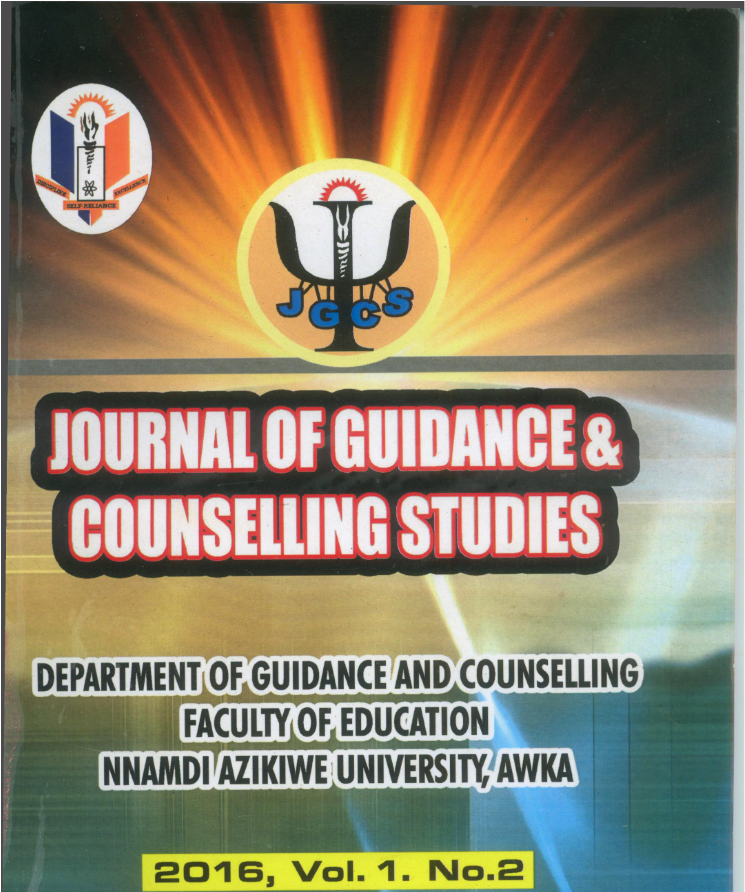SOME ADVANCES IN THE STUDY OF MENTALLY RETARDED: IMPLICATION FOR EDUCATION AND TRAINING
Mots-clés :
mentally retarded, subnormal, education, training, advancesRésumé
In recent years, researchers have attempted to study the mentally retarded using a wide variety of paradigms. This reading is an attempt to present a comprehensive synopsis of some current social, medical, and psychological and educational attitudes to the mentally retarded and subnormal.
The paper concludes by arguing that the ambit and precinct of mentally retarded and subnormal pose some central ethical issues which need to be faced by society thus pointing the way towards plans for the future in this realm of enquiry.
Références
Baranyay, E. P. (1971). The mentally handicapped adolescent. London Oxford Pergamon Press.
Clarke, A. D. B. & Hermelin, B. F. (1995). Adult imbeciles: their abilities and trainability. Lancet, 1337-339.
Clarke, A. D. B. & Clarke, A.M. (1983). Mental retardation and behavioural research. London: Churchill Livingstone.
Chamey, L. (1970). The trainable mentally retarded. In Kirk and Wiener (1963). Behavioural research on exceptional children. Washington D.C. Council for Exceptional Child.
Furth, H. G. & Youniss, J. (1988). Colour object paired - associates in deaf and hearing children with and without response competition. Journal of Consulting Psychology; 28, 224-227.
Furth, H. G. & Milgram, N. A. (1999). The influence of language and classification: a theoretical model applied to normal, retarded and deaf children. Genetic Psychology Monography, 72, 317-315
Grant, G. W. B. (1971). Some management problems of providing work for the mentally disordered with particular references to the handicapped. Unpublished M.Sc. Thesis University of Manchester, Institute of Science and Technology.
Heber, R. (1959). The role of environmental variables in the etiology of cultural-familial mental retardation. Proceedings of the First Congressional Association of Scientific Studies of Mental Deficiency 456-465 B. W Richards (ed). Reigate; Michael Jackson.
Hermelin, B. F. & O’Connor, N. (1988). The role and concept learning of imbeciles. Journal of Mental Deficiency Research, 2, 21-27.
Hottel, J. V. (2003). The effect of day class training of severely mentally retarded on their intelligence, social maturity, behavior development and home adjustment. Nashville, Tennesse George Peabody College for Teachers.
Kirk, S. A. (1962b). Educating exceptional children. Boston: Houghton Mifflin.
Kirk, S. A. (1968/ Early education of mentally retarded. Urbana II; University of Illinois Press.
Kirk, S. A. & Weinner, B. B. (1963). Behavioural research on exceptional children. Washington D.C. Council for Exceptional Child.
Kolstoe, O. P. (1998). Language training of low grade mongoloid children. American of Mental Deficiency 63, 17-30.
Luria, A. R. (1987). The role of speech in the regulation of normal and abnormal behaviour. London: Pemamon.
Luria, A. R. & Vinogradora, O. S. (2004). An objective investigation of dynamics of semantic systems. British Journal of Psychology, 50, 89-100.
Lyle, J. (1996a). The effect of an institution environment upon the verbal development of imbecile children; ii speech and language. Journal of Mental Deficiency Research, 4, 1-13.
Lyle, J. (1996b). The effect of an institution environment upon the verbal development of imbecile children: The Brooklands residential family unit. Journal of Mental Deficiency Research, 4, 14-22.
Loos, F. M., & Tizard, J. (1966). The Employment of adult imbeciles in a hospital workshop. American Journal of Mental Deficiency, 609, 122-132.
Milgram, N. A.. (1996). Verbalization and conceptual classification in trainable mentally retarded children. American Journal of Mental Deficiency; 70, 765.
Mein, R. & O’Connor, N. (1985). A study of the oral vocabularies of severely subnormal patients. ; Journal of Mental Deficiency Research, 4, 130-143.
Miller, L. K., Hale, G. A. & Stevenson, H.W. (1998). Learning and problem solving by retarded and normal subjects. American Journal of Mental Deficiency, 72, 681-690.
Mitter, P. (1974). Language and communication. Chapter 17 in Clarke, A.M. and Clarke, A.D.B. (eds) j Mental deficiency. The changing outlook (3rd edition) London; Menthuen.
O’Connor, N. & Hermelin, B. F. (2001). Speech and thought in severe subnormality. London; Pergamon
Okojie, J. O. & Okojie, E. O. (2013). The Control and Management of Pain: A Hypnotic Approach. Benin Journal of Educational Studies 17(1) 150-161.
Okojie, J. O. & Ibadin V. O. (2013). Illness, Disease and Health: A Psycho-Social Discourse. African Journal of Education, (AJE), 6 (1), 155-156.
Okojie, J. O. (2014). Social Construction of Conceptions of Stigma. Africa Journal of Education, (AJE), 6 (2) 41-46.
Okojie, J. O. & Ibadin, V. O. (2014). The Relevance of Psychology for Education: A Pedagogical Perspective. African Journal of Education (AJE), 5 (2), 232-244.
Presidents Committee on Mental Retardation, (1972a). Entering the era of human ecology. Washington, D.C: Department of Health Education and Welfare Publication, 5, 72-77.
Riese, H. (1989). Academic work with an eleven years old girl with an IQ of 41. American Journal of Mental Deficiency, 60, 545-551.
Schucman, H. (1980a). Evaluating the educability of the severely mentally retarded child. Psychological Monograph, 60, 545-551.
Schucman, H. (1980b). Evaluating the educability of the severely mentally retarded child. Psychological Monograph, 74, 1-32.
Spreen, O. (1968a). Language functions in mental retardation; a review of language child. Psychological Monograph, 74, 1-32.
Spreen, O. (1968b). Language functions in mental retardation: a review of language development, types of retardation and intelligence level. American Journal of Mental Deficiency, 69, 482- 494.
Sen, A. & Clarke, A. M. (1988). Some factors affecting distractibility in the mental retardate. American Journal of Mental Deficiency, 73, 50-60.
Speijer, N. (1968). Basic principles of the sheltered workshop. Proceedings of the first congress of international association of scientific studies. Mental Deficiency, 162-165 Reigate Michael Jackson.
Tizard, J. (1962). The residential care of mentally handicapped children. Proceedings of the London conference on the scientific study of mental deficiency, 1960, 11 659-666. Dagenhoun: May and Baker, Ltd.
Tizard, J. & Loos, E. M. (1954). The learning of a spatial relations test by adult imbeciles. American Journal of Mental Deficiency, 59, 85-90.
World Health Organisation, (1954). The mentally subnormal child technical report Serial No.75 General WHO.


